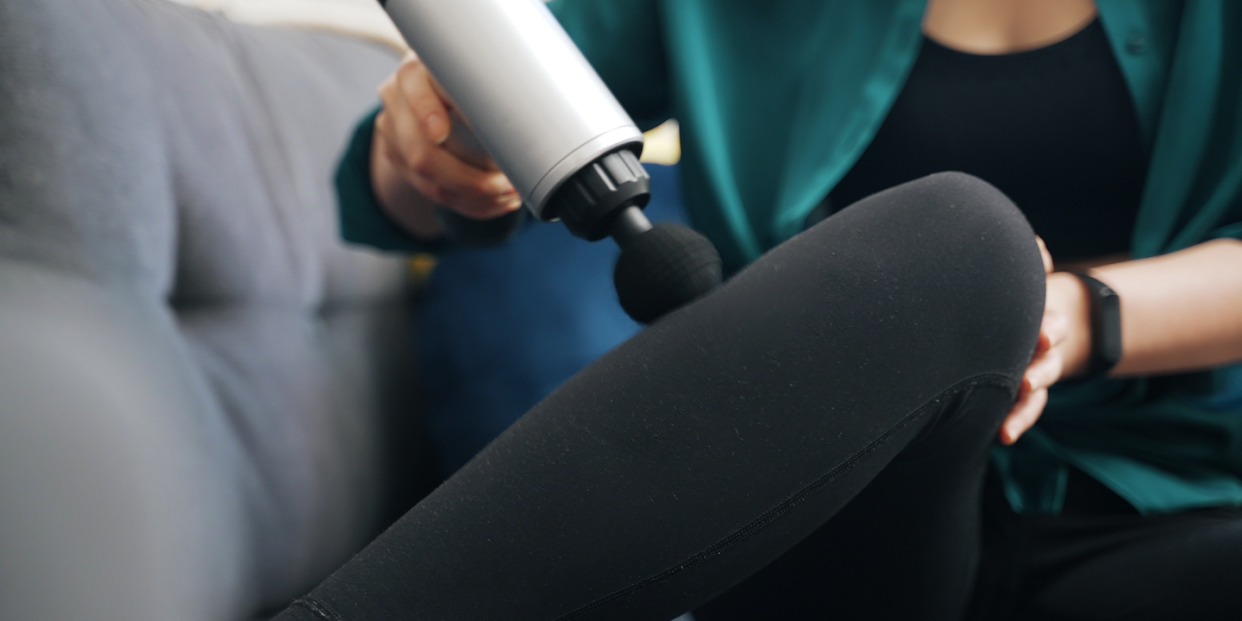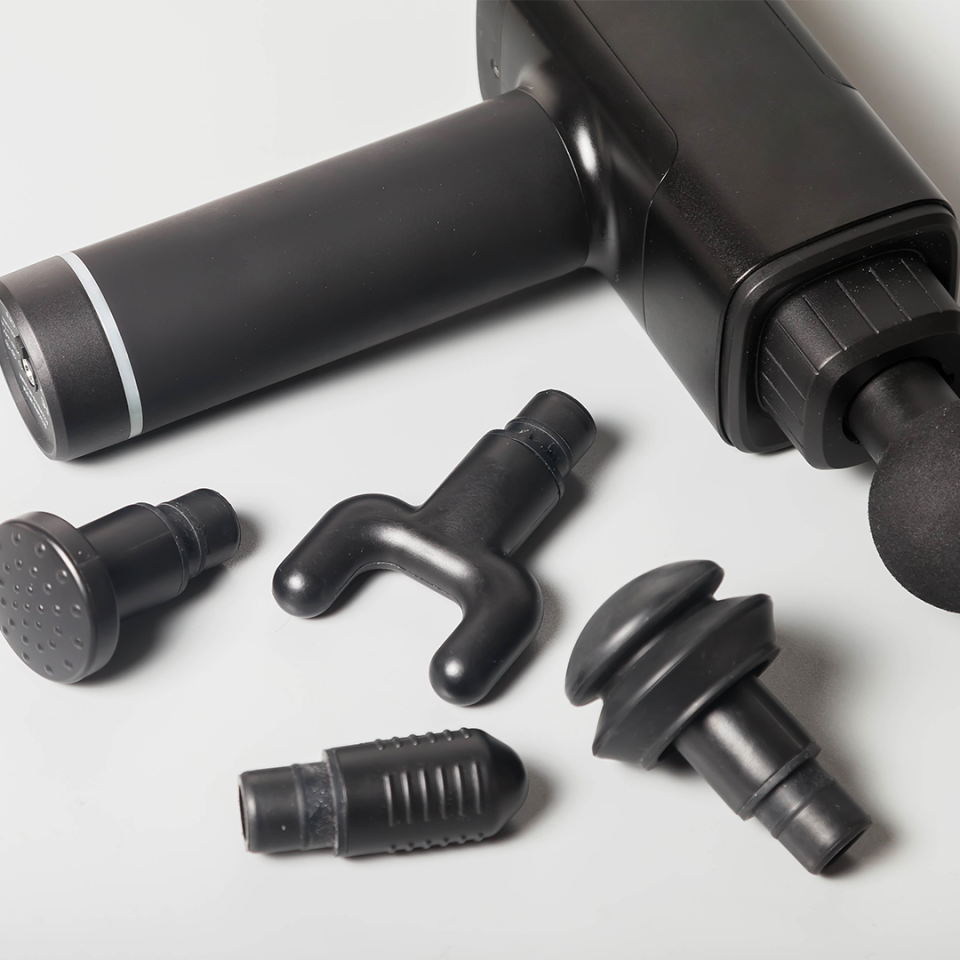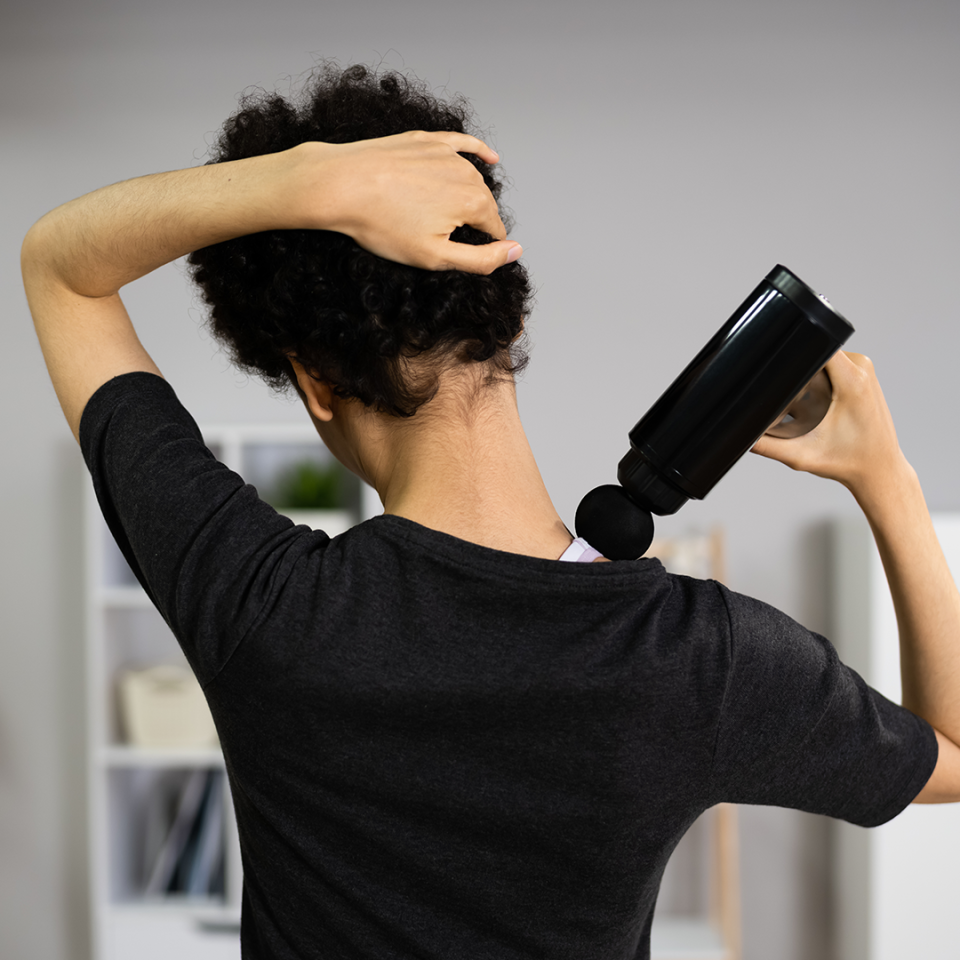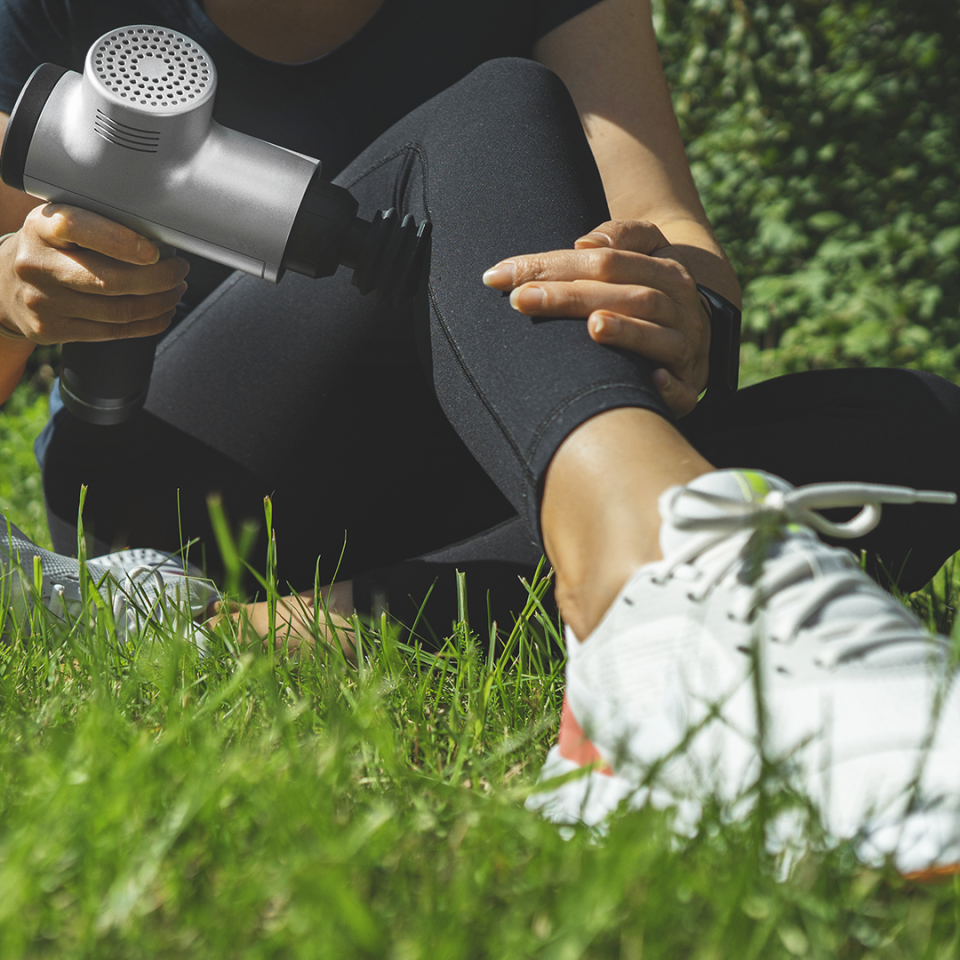This is how to use a massage gun properly, according to experts

Massage guns are all the rage right now, and for good reason. These hand-held gadgets are designed to increase blood flow to your muscles, loosen up tight spots and reduce inflammation – ideal for soothing post-workout pains and WFH niggles.
Evidence also shows they can help improve flexibility, increase range of motion and even enhance athletic performance. And then there are all stress-busting, relaxation-enhancing benefits...
But to reap the rewards, it’s important to use your massage gun correctly. So, we called in fitness pro and massage gun expert Nikos Skevis to give us a whistle-stop guide to percussive therapy.
From how long to massage for to which attachment to choose, here’s everything you need to know.
Meet the expert: Nikos Skevis is master trainer and educational consultant for Hyperice. He has a degree in sports science, personal training and nutrition qualifications and over 16 years' experience in the fitness industry.
Which massage gun head should I use?

Most massage guns come with multiple heads in a variety of shapes and sizes, allowing you to target large and small muscle groups with precision. Here, Skevis breaks down which attachments are best suited to different areas.
Ball-shaped attachment: This rounded head is best for medium and large muscle groups like the calves, thighs, glutes and hips, as it can target multiple muscles simultaneously. “It allows for even, steady pressure and is great for a quick, straightforward massaging session,” Skevis explains.
Flat head: For a slightly more vigorous massaging experience, this versatile attachment offers deeper penetration with increased force to really target those sore spots. It’s also good for large muscle groups including the calves, quads, hamstrings and glutes. “As it’s solid, it can be uncomfortable on areas where there is less muscle mass, so be sure to use very light pressure,” advises Skevis.
Fork attachment: Also known as the spinal head, choose this attachment if you’re looking to target longer, thinner muscles such as the forearm, upper arm and calf area. Its unique design provides greater coverage and delivers twice as much pinpointed force compared to other attachments. It’s also great for painful Achilles tendons and sore feet in general.
Bullet head: This petite head is ideal for getting into smaller areas like the hands and feet. Its tiny size allows you to pinpoint tough areas and replicates a deep tissue massage. “Essentially, it acts as a massage therapist’s thumb when performing trigger point therapy,” says Skevis.
Cushion attachment: This ultra soft head should be your go-to for sensitive areas like the neck and shoulders. It alleviates muscle tension and enhances blood circulation, providing a gentle, soothing massage experience that will leave you feeling relaxed and rejuvenated.
Skevis offers an important reminder to stick to tight muscles and connective tissue, staying away from joints and bony areas like your knees, hips, ribs and spine. Not only will this cause you discomfort, but these areas are also more susceptible to damage.
Is it okay to use a massage gun every day?

Absolutely. “I’d advise everyone to incorporate a massage gun into their daily routine,” says Skevis. “Think of a massage gun like an electric toothbrush. It should be used every day, regardless of activity.”
According to him, setting aside some time each day to care for your muscle tissue will help prevent any future muscular issues and promote longevity. “It doesn’t have to be a big chore, just a few minutes is more than enough.”
As with anything, it’s important not to overdo it. Skevis warns against spending longer than two minutes on any individual muscle group in one session and says to be gentle, starting on the lowest speed setting and working your way up.
If you’re suffering with an injury or any nerve-related issues, it’s important to seek medical advice before using a massage gun.
How do you warm up with a massage gun?
Whether you’re about to go on a run or you're heading to a Zumba class, using a massage gun before exercise can help increase blood flow and activate your muscles. One 2020 study found that cyclists who used a percussive therapy device before performing sprints noticed a significant improvement in performance.
“If you want to activate your muscles, I’d suggest using a more energetic application with a higher frequency level of around 30 seconds per muscle,” says Skevis.
“If you have tight muscles, allocate one to two minutes for each one, using low to moderate pressure and focusing on tension points,” he adds.
How do you use a massage gun during a workout?
If your muscles are starting to feel sore, but you want to get to the end of your workout, using a massage gun midway through can give you a much-needed boost. “Use your massage gun during rest periods, targeting the muscles and surrounding areas that are most fatigued, and it should provide some relief and help with any tightness,” says Skevis.
Evidence also shows that using a massage gun during exercise can enhance your performance. In a 2021 study, participants who used a massage gun in between sets performed more repetitions than those who didn’t.
How do you use a massage gun for muscle recovery?

It’s widely acknowledged that these handy tools can do wonders for your post-workout recovery, whether you’re an avid runner, a keen gym-goer or a yogi.
According to Skevis, you should use your massage gun on the muscles you’ve just worked as soon as possible after your session.
“Spend between one and two minutes on each muscle group, using the device at a low to moderate frequency,” he suggests. “This will help reduce muscle soreness and stiffness and can assist with the removal of fatiguing metabolic waste products.”
How do you use a massage gun for pain relief?
If you have a particular problem area – perhaps your calves are in need some of some TLC or your work-from-home routine has wreaked havoc on your shoulders – then a massage gun can help relieve some tension or discomfort. Here’s how.
Sweep the muscle a few times to pinpoint the tender spot.
When you find it, spend between 20 and 30 seconds here and you should start to feel the pain and tension melt away.
If it feels right, you can apply a little more pressure, but avoid reaching high levels of pain. 7/10 should be your cut off point.
Adjust the level of pressure depending on the muscle group and the level of discomfort you’re experiencing.
Remember, massage guns aren’t suitable on injuries, nerve conditions or serious sprains.
How do you use massage gun for relaxation?
Despite popular belief, massage guns aren’t just for serious sportspeople. Exercise recovery aside, they allow you to replicate that glorious spa-like experience in the comfort of your own home. “A long, gentle massaging session will leave your body feeling light as a feather, stimulate your parasympathetic nervous system and send you into relaxation mode,” explains Skevis.
Opt for a soft, flat or cushioned head, use the lowest speed setting and apply light to moderate pressure, depending on your personal preference. A 20-30 minute massaging session should be sufficient to help you feel more zen.
GHI Approved massage guns
See our full round-up of tried and tested massage guns here.
You Might Also Like


